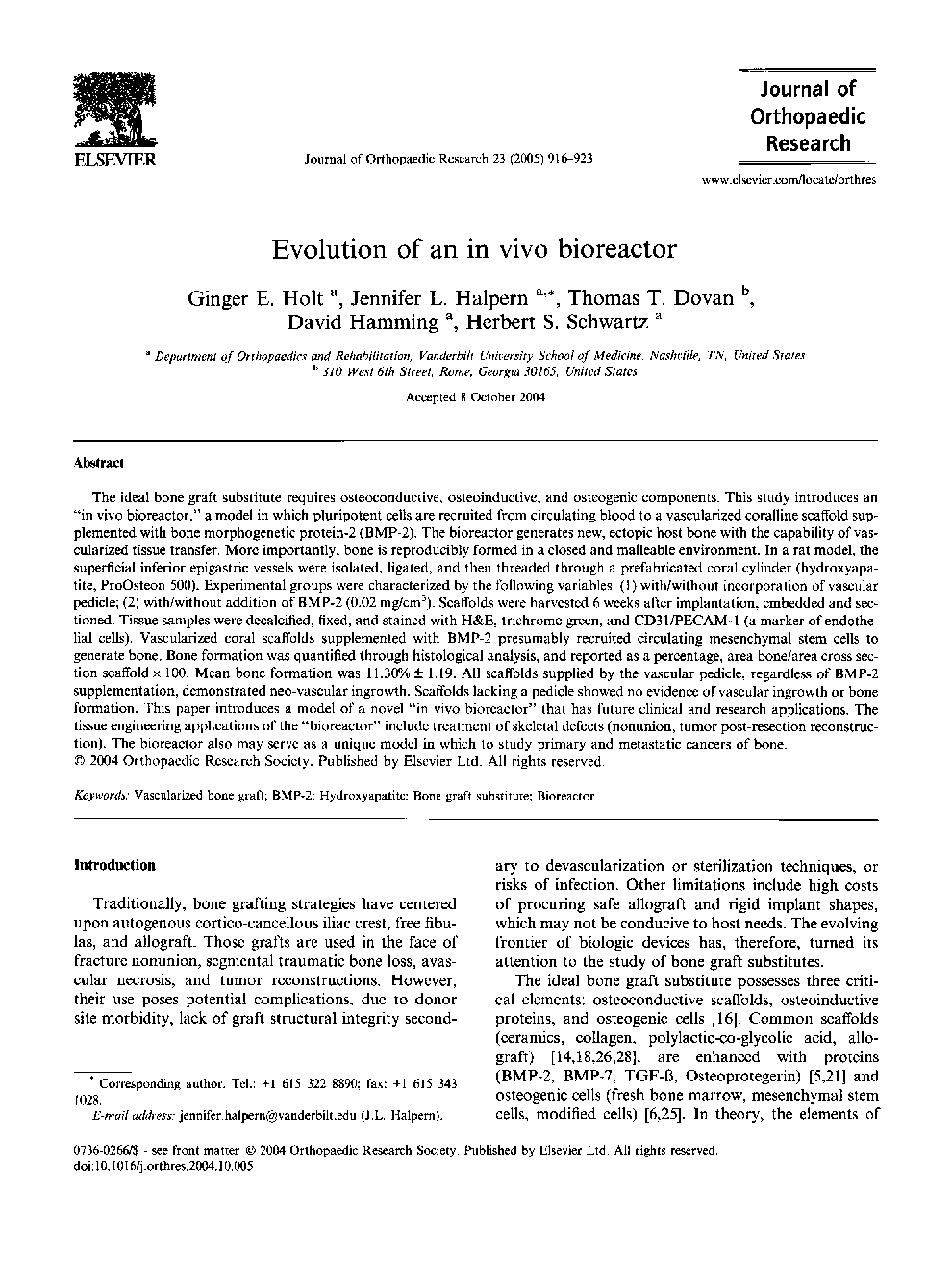| Article ID | Journal | Published Year | Pages | File Type |
|---|---|---|---|---|
| 9353953 | Journal of Orthopaedic Research | 2005 | 8 Pages |
Abstract
The ideal bone graft substitute requires osteoconductive, osteoinductive, and osteogenic components. This study introduces an “in vivo bioreactor,” a model in which pluripotent cells are recruited from circulating blood to a vascularized coralline scaffold supplemented with bone morphogenetic protein-2 (BMP-2). The bioreactor generates new, ectopic host bone with the capability of vascularized tissue transfer. More importantly, bone is reproducibly formed in a closed and malleable environment. In a rat model, the superficial inferior epigastric vessels were isolated, ligated, and then threaded through a prefabricated coral cylinder (hydroxyapatite, ProOsteon 500). Experimental groups were characterized by the following variables: (1) with/without incorporation of vascular pedicle; (2) with/without addition of BMP-2 (0.02 mg/cm3). Scaffolds were harvested 6 weeks after implantation, embedded and sectioned. Tissue samples were decalcified, fixed, and stained with H&E, trichrome green, and CD31/PECAM-1 (a marker of endothelial cells). Vascularized coral scaffolds supplemented with BMP-2 presumably recruited circulating mesenchymal stem cells to generate bone. Bone formation was quantified through histological analysis, and reported as a percentage, area bone/area cross section scaffold Ã 100. Mean bone formation was 11.30% ± 1.19. All scaffolds supplied by the vascular pedicle, regardless of BMP-2 supplementation, demonstrated neo-vascular ingrowth. Scaffolds lacking a pedicle showed no evidence of vascular ingrowth or bone formation. This paper introduces a model of a novel “in vivo bioreactor” that has future clinical and research applications. The tissue engineering applications of the “bioreactor” include treatment of skeletal defects (nonunion, tumor post-resection reconstruction). The bioreactor also may serve as a unique model in which to study primary and metastatic cancers of bone.
Related Topics
Health Sciences
Medicine and Dentistry
Orthopedics, Sports Medicine and Rehabilitation
Authors
Ginger E. Holt, Jennifer L. Halpern, Thomas T. Dovan, David Hamming, Herbert S. Schwartz,
